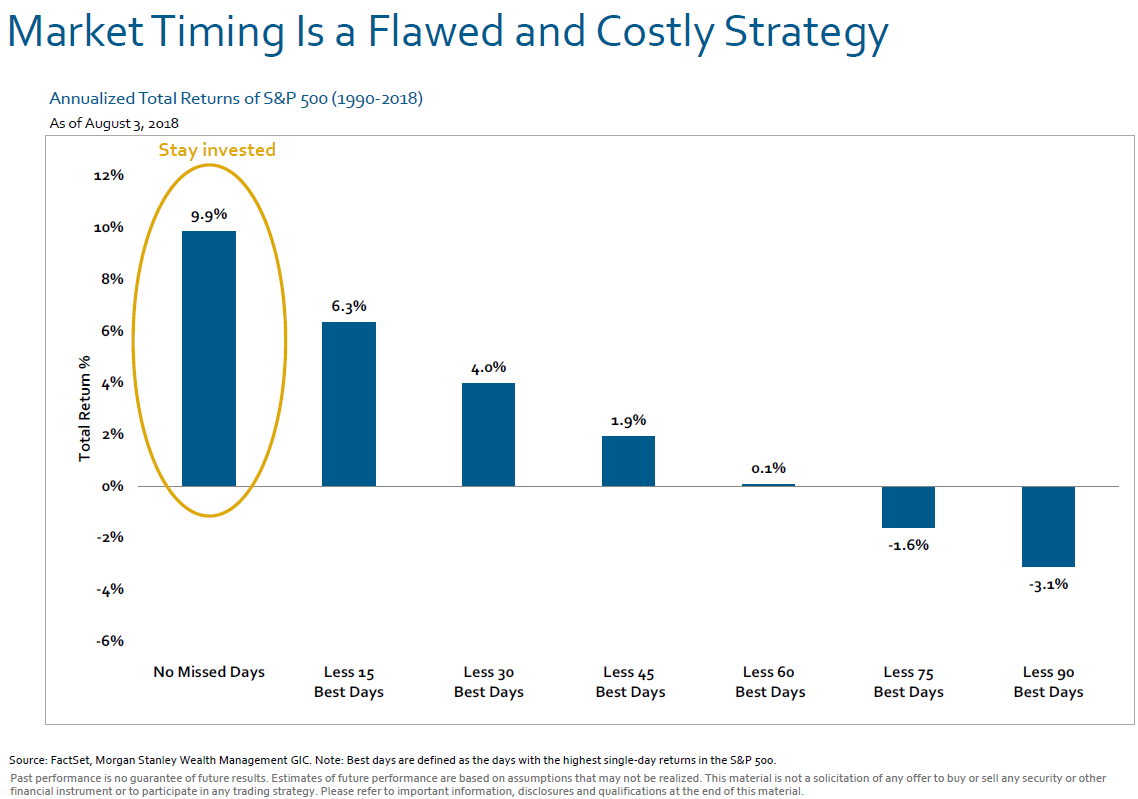By Mark Rylance, CFP®, CFT ™
Market jitters are running high these days. Stock markets throughout the world witnessed significant declines of 10%+ before rallying back the last few days of October. Overall the S&P 500 was down 6.84% for the month and small cap stocks saw a decline of over 10%. Bonds, which in the past have proven to be a safe haven against stock market declines, logged slightly negative returns for the month due to the threat of rising interest rates.
Even though the month of October was dreadful as far as market returns are concerned, there are still a lot of positive things happening in the U.S. economy. So far this quarter, 350 of the S&P 500 companies have reported earnings, with an average year over year growth of 24%. However, we are starting to see some head winds and changes in key fundamentals that could affect corporate earnings going forward.
Rising interest rates, rising oil prices and a strong US dollar can put pressure on a company’s ability to generate higher earnings. Under these conditions companies must pay more to borrow money (higher interest rates), pay more in transportation and raw material costs (higher energy prices) and their products become more expensive overseas (rising dollar). Add on the trade war talk, and you now have an environment that might lead investors to reevaluate their pricing models.
Stock buybacks have helped keep earnings propped up, but at some point, that will end as well. All this sounds very bearish, but please know that we are not suggesting that a significant drop in the market (like 2008-2009 or 2000-2002) is imminent. But, when valuations get this high, any surprise misstep can trigger a sell-off, which is what we are currently witnessing. We must keep in mind that there are still many factors that can take our strong economy and keep it strong. Tax cuts and reduced regulations, although politically unpopular, help stimulate the economy.
So, the obvious question is: why not sell stocks and buy something else? There are many challenges with this option. First, we have no way to predict future events. The trade war could be over in one tweet, which could cause the stock market to have a significant rally, of which we wouldn’t participate because we were on the sidelines. Another challenge is that we might find ourselves in the middle of a “garden variety” correction of 10% – 15%, which happen often and can quickly reverse – again, we would be out of the market. The chart below shows the danger in missing these up days.

Our best prescription for markets like this is the following:
- Make sure your allocation to stocks, bonds, and real estate fits your required return and risk tolerance
- Rebalance along the way (buy low and sell high)
- Try and avoid large purchases that require you to sell investments while they are down in price
- Have faith in capitalism – markets work, but sometimes we need to give them time.
Our job is to execute on the above strategies. Your job is to have faith that markets work. The reason we get above average returns is because there is short-term risk (volatility) associated with them. We must also not forget that historically the stock market goes up 75% of the time, which means that it also goes down 25% of the time. We just haven’t seen many declines since the Great Recession. This too shall pass.

